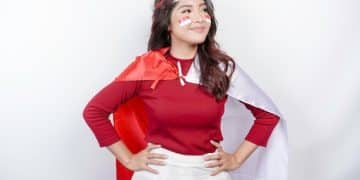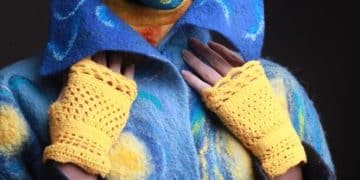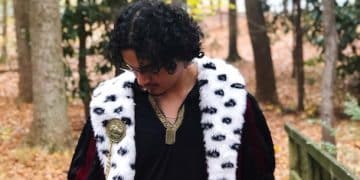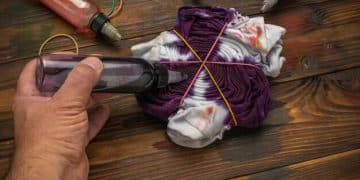Sewing Cosplay Costumes: A Beginner’s Guide to Essential Techniques
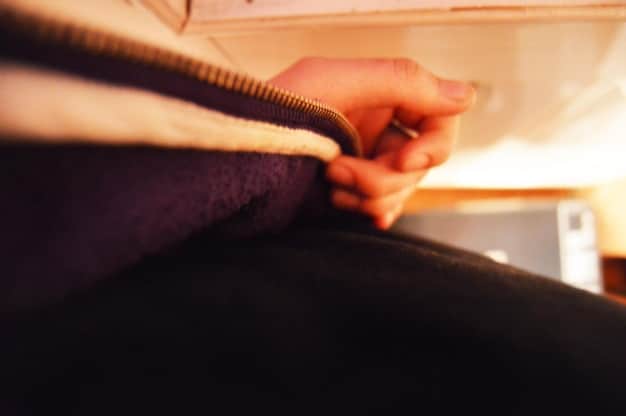
This beginner’s guide to sewing cosplay costumes provides essential stitches and techniques to help you create your first cosplay, covering everything from fabric selection to basic sewing methods.
Embarking on your first cosplay project can be an exciting journey into the world of creativity and craftsmanship. This beginner’s guide to sewing cosplay costumes: essential stitches and techniques will equip you with the foundational skills needed to bring your favorite characters to life, making your entry into cosplay both enjoyable and successful.
Getting Started: Essential Sewing Tools for Cosplay
Before diving into the world of cosplay sewing, having the right tools is crucial. These tools will not only make the sewing process easier but also ensure professional and durable results. Let’s explore the essential tools you’ll need to get started on your cosplay sewing journey.
Must-Have Sewing Tools
A well-equipped sewing kit is the foundation of any successful cosplay project. Here are some essential tools you should have:
- Sewing Machine: A reliable sewing machine is a significant investment. Look for models with adjustable stitch lengths and zigzag capabilities.
- Scissors and Shears: Fabric scissors are essential for cutting fabric cleanly. Seam rippers are useful for correcting mistakes without damaging the fabric.
- Measuring Tools: A flexible measuring tape is necessary for taking accurate body measurements, while a ruler or yardstick is useful for measuring fabric.
- Pins and Needles: Straight pins hold fabric pieces together before sewing. Hand-sewing needles are needed for finishing details and repairs.
Additionally, consider investing in a rotary cutter and cutting mat for precise fabric cuts, especially for larger pieces.
Fabric Selection for Cosplay
Choosing the right fabric is just as important as having the right tools. Different fabrics offer different qualities and aesthetics. Here’s a quick guide:
- Cotton: Easy to work with, affordable, and versatile. Good for lining and basic garments.
- Polyester: Durable and wrinkle-resistant, making it ideal for costumes that need to withstand wear and tear.
- Spandex: Offers stretch and flexibility, perfect for form-fitting costumes like superhero suits.
- Felt: Great for adding details, embellishments, and structural elements to your cosplay.
When selecting fabric, also think about the character you’re cosplaying. Research the materials their costumes are made of to ensure authenticity.
Equipping yourself with the right tools and fabrics sets a solid foundation for your cosplay sewing endeavors. Take the time to gather these essential items, and you’ll be well-prepared to tackle your first project.
Mastering Basic Hand Stitches for Cosplay
Hand stitches are fundamental to sewing and are particularly useful for cosplay projects, allowing for intricate details and finishing touches that a machine can’t always provide. Let’s explore some essential hand stitches every cosplayer should know.
Understanding and mastering these basic hand stitches will significantly enhance the quality and durability of your cosplay costumes. Practice each stitch until you feel comfortable, and you’ll find them invaluable for various sewing tasks in cosplay.
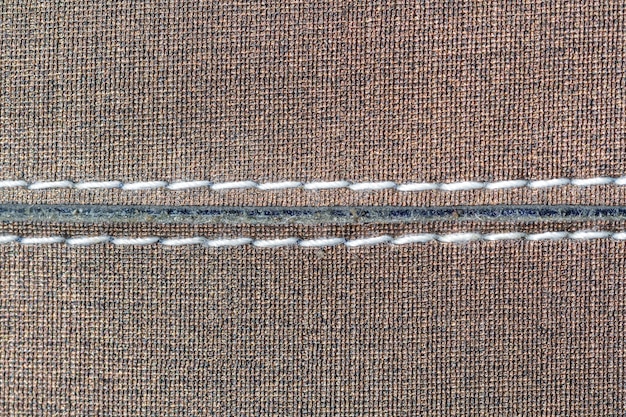
Essential Hand Stitches
Here are some basic hand stitches that are essential for any cosplay project:
- Running Stitch: This is the most basic stitch, used for quick seams or gathering fabric. It involves passing the needle in and out of the fabric in a continuous, even manner.
- Back Stitch: Stronger than the running stitch, the back stitch is excellent for creating durable seams. Each stitch overlaps the previous one, resembling a machine-sewn seam.
- Blind Hem Stitch: This stitch is used to create invisible hems. It involves catching just a few threads of the main fabric to hide the stitch on the outside.
- Slip Stitch: Ideal for closing openings in linings or attaching facings. The needle slips through the fold of the fabric, creating a clean, almost invisible finish.
Tips for Perfect Hand Stitches
To achieve clean and professional-looking hand stitches, keep these tips in mind:
- Use the Right Needle and Thread: Choose a needle that matches the fabric thickness and a thread that complements the fabric color.
- Keep Stitches Consistent: Uniform stitch length and spacing contribute to a neater appearance.
- Secure Your Stitches: Always start and end with a secure knot to prevent the stitches from unraveling.
By mastering essential hand stitches, you’ll have the skills to tackle intricate details and finishing touches, improving the overall quality of your cosplay costumes.
Understanding Sewing Machine Basics for Cosplay
A sewing machine is an invaluable tool for creating cosplay costumes, allowing for efficient and precise stitching. Getting familiar with the basics of your sewing machine is crucial for successful cosplay projects. Let’s explore the essential components and techniques every beginner should know.
Parts of a Sewing Machine
Understanding the different parts of your sewing machine will help you operate it effectively:
- Needle: Pierces the fabric, carrying the thread to form stitches.
- Bobbin: Holds the bottom thread that interlocks with the top thread to create a stitch.
- Presser Foot: Holds the fabric in place against the feed dogs.
- Feed Dogs: Move the fabric under the needle at a consistent rate.
- Tension Dial: Adjusts the tension of the top thread to create balanced stitches.
Consult your sewing machine’s manual for detailed information about each part and its function.
Thread and Tension
Proper thread selection and tension adjustment are key to achieving quality stitches:
- Thread Type: Use a thread that matches the fabric type and color. Polyester or cotton threads are versatile choices.
- Tension Adjustment: Test your stitches on a scrap piece of fabric. If the stitches are too loose or too tight, adjust the tension dial accordingly.
Balanced tension results in neat, even stitches that are neither too tight nor too loose.
Basic Sewing Machine Techniques
Start with these basic techniques to build your sewing skills:
- Straight Stitch: The most common stitch, used for joining fabric pieces together.
- Zigzag Stitch: Useful for finishing raw edges and preventing fraying.
- Backstitching: Reinforces the beginning and end of a seam to prevent unraveling.
Practice these techniques on scrap fabric to gain confidence before working on your cosplay project.
Understanding the basics of your sewing machine will empower you to create high-quality cosplay costumes with precision and efficiency. Take the time to familiarize yourself with its parts and practice essential techniques.
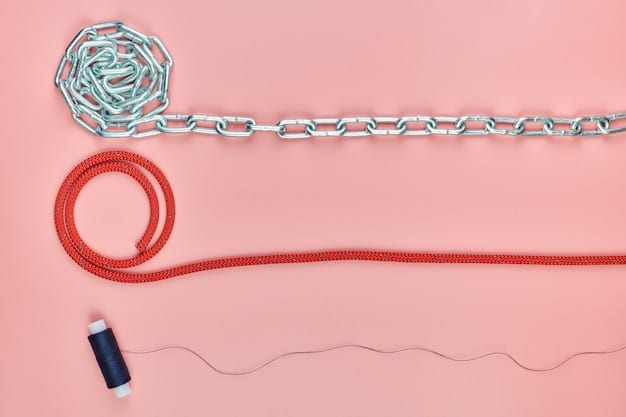
Essential Stitches for Cosplay Costumes
Certain stitches are particularly useful and versatile for creating cosplay costumes. Mastering these stitches will allow you to tackle a wide range of projects with confidence. Let’s explore some essential stitches that every cosplay seamstress should understand.
The Straight Stitch
The straight stitch is a foundational stitch used for joining fabric pieces and creating seams. It’s simple yet essential for building the main structure of your cosplay costume. To execute a straight stitch:
- Set the sewing machine to a straight stitch setting.
- Align the fabric edges and place them under the presser foot.
- Sew in a straight line, maintaining a consistent seam allowance.
- Backstitch at the beginning and end to secure the seam.
The Zigzag Stitch
The zigzag stitch is versatile and used for various purposes, including finishing raw edges, creating buttonholes, and adding decorative elements. To use the zigzag stitch:
- Set the sewing machine to a zigzag stitch setting.
- Adjust the stitch width and length according to your project’s needs.
- Sew along the edge of the fabric to prevent fraying.
- Use a wider stitch for decorative purposes or to create buttonholes.
The Overlock Stitch
The overlock stitch is ideal for finishing edges and creating a professional look. It trims and encloses the fabric edge in a single step, preventing fraying. Some machines may have a specific overlock or serger setting. Overlock stitches creates professional-looking seams and edges, but it requires an overlock sewing machine.
The Blind Hem Stitch
The blind hem stitch creates an invisible hem by catching just a few threads of the main fabric. This stitch is perfect for achieving a clean, professional finish on hems and facings:
- Fold and press the hem.
- Set the sewing machine to a blind hem stitch setting.
- Position the fabric so the needle catches a small amount of the hem’s edge.
- The result is a nearly invisible hem on the garment’s exterior.
Understanding and mastering these essential stitches will significantly enhance the quality and versatility of your cosplay sewing projects. Practice each stitch until you feel comfortable, and you’ll find them invaluable for various tasks.
Pattern Adjustments and Alterations for Cosplay
Sewing patterns are rarely a perfect fit straight out of the envelope. Learning to make adjustments and alterations is crucial for achieving a well-fitted and flattering cosplay costume. Let’s explore some common pattern adjustments and alterations that every cosplayer should know.
Taking Accurate Measurements
Accurate body measurements are the foundation of any successful pattern alteration. Use a flexible measuring tape and follow these tips:
- Bust: Measure around the fullest part of your bust, keeping the tape level.
- Waist: Measure around your natural waistline, which is usually the narrowest part of your torso.
- Hips: Measure around the fullest part of your hips, keeping the tape level.
- Height: Measure from the top of your head to the soles of your feet.
Common Pattern Adjustments
Once you have your measurements, compare them to the pattern’s size chart and make the necessary adjustments:
- Length Adjustments: Shorten or lengthen the pattern pieces as needed to match your height.
- Bust Adjustments: Make a Full Bust Adjustment (FBA) or Small Bust Adjustment (SBA) if your bust measurement falls outside the pattern’s size range.
- Waist Adjustments: Adjust the waistline of the pattern to match your waist measurement.
- Hip Adjustments: Adjust the hip line of the pattern to match your hip measurement.
How to Alter a Pattern
Altering patterns can seem intimidating, but with practice, it becomes easier. Here are some tips to alter a pattern:
- Understand that many sewing patterns come with too much ease – extra fabric designed for comfort and movement.
- Compare your measurements to the pattern and determine where the garment needs to be taken out or let out.
- Use a ruler and pencil to draw new cutting lines on the pattern, adding or subtracting seam allowance as needed.
- Cut along the new cutting lines and discard the excess fabric.
- Pin the pieces together with the right sides together and sew the seam.
- Try on the garment to check the fit and make any further adjustments as needed.
By learning to make pattern adjustments and alterations, you’ll be able to create cosplay costumes that fit you perfectly and enhance your overall appearance.
Adding Details and Embellishments to Your Cosplay
The details and embellishments are what truly bring a cosplay costume to life, adding authenticity and visual appeal. Let’s explore some techniques for adding details and embellishments that will elevate your cosplay to the next level.
Appliqués and Patches
Appliqués and patches are a great way to add intricate designs and logos to your cosplay. To apply appliqués and patches:
- Choose Your Appliqué or Patch: Select designs that match your character’s costume.
- Secure the Appliqué or Patch: Pin or fuse the appliqué or patch to the fabric.
- Sew the Appliqué or Patch: Use a zigzag stitch or hand-sew around the edges to secure it in place.
Embroidery
Embroidery adds a touch of elegance and detail to your cosplay. Whether you choose to hand-embroider or use an embroidery machine, here are some tips:
- Choose Your Design: Select a design that complements your character’s costume.
- Transfer the Design: Use a transfer pen or stabilizer to transfer the design to the fabric.
- Embroider the Design: Follow the design lines using your chosen embroidery technique.
Adding Armor and Accessories
Many cosplay costumes feature armor and accessories that require additional techniques. Here are some tips:
- You can create armor using craft foam to add 3D elements to your cosplay.
- Use EVA foam to mimic the look of metal
- Use worbla which molds with heat but doesn’t expand like foam.
To secure these accessories, a hot glue gun can be used.
Adding details and embellishments is an essential part of creating a memorable cosplay costume. Experiment with different techniques and materials to achieve the desired look.
| Key Point | Brief Description |
|---|---|
| 🧵 Essential Tools | Sewing machine, scissors, measuring tape, pins, and needles are must-haves. |
| 🪡 Basic Hand Stitches | Learn running, back, blind hem, and slip stitches for intricate details. |
| ⚙️ Sewing Machine Basics | Understand machine parts, thread, and tension for quality stitches. |
| 📐 Pattern Adjustments | Take accurate measurements and adjust patterns for a perfect fit. |
Frequently Asked Questions
▼
Essential tools include a sewing machine, fabric scissors, seam ripper, measuring tape, pins, and needles. These tools will cover basic tasks and ensure accurate and durable seams.
▼
Cotton and polyester are great choices for beginners due to their affordability and versatility. Cotton is easy to work with, while polyester is durable and wrinkle-resistant, making them ideal for various costume components.
▼
Start by taking accurate body measurements and comparing them to the pattern’s size chart. Make adjustments for length, bust, waist, and hips as needed. Consult online tutorials for detailed guidance.
▼
Essential hand stitches include the running stitch, back stitch, blind hem stitch, and slip stitch. The running stitch is for quick seams, back stitch for durability, blind hem for invisible hems, and slip stitch for closing openings.
▼
You can prevent fabric from fraying by using a zigzag stitch along the raw edges, serging the edges with an overlock machine, or applying a seam sealant. These methods help to secure the fabric fibers and prevent unraveling.
Conclusion
Embarking on sewing cosplay costumes can be a rewarding and creative outlet. By mastering essential stitches, understanding fabric choices, and learning basic sewing machine techniques, you’ll be well-equipped to bring your favorite characters to life. Start with simple projects, practice regularly, and don’t be afraid to experiment. Soon, you’ll have the skills to create impressive and personalized cosplay costumes.
